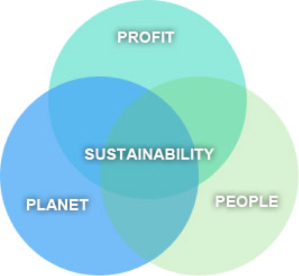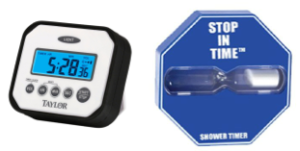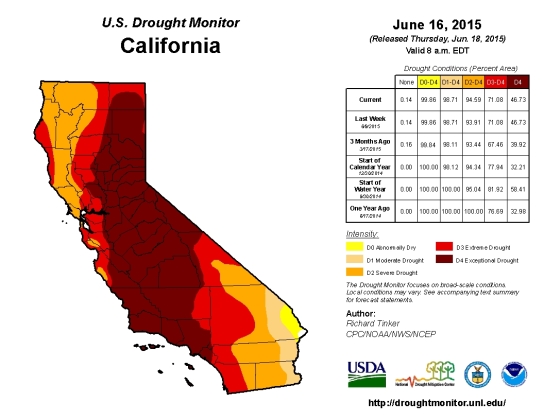Final PSP Recap
My PSP for this term has been to limit my showers to five minutes. It has been an eye-opening experience for me because it has made me more aware of how much water I consume not only by showering, but also through other daily activities like flushing, doing dishes, and washing my hands. It is amazing how dependent we are on water and how much we take it for granted.
Triple Bottom Line
I haven’t been able to come up with any social impacts of my shorter showers, especially since my showers before my PSP were only ten minutes longer. It’s not like anyone else directly benefits or suffers from me trimming my shower times down by a few minutes. In terms of economics, my shorter showers save me very little money since water is so inexpensive.
The environmental impacts of my decision are the most significant: as you can see from the “Shower Log” table, I have saved a total of 110.25 gallons during these past four weeks. If I were to apply these savings to the rest of the year (110.25 gallons x 12 months), I would save a total of 1,323 gallons! If these savings were applied to the entire population of Corvallis, 73,159,254 gallons of water would be saved annually (1,323 gallons x 55,298 people). On a global scale, this would mean 9.60 * 1012 gallons of water would be saved annually (1,323 gallons x 7,255,560,200).
Source: https://www.e-education.psu.edu/eme807/node/642
Although domestic water use only accounts for approximately 8% of US water use, small changes can make a big difference cumulatively. Every drop of water saved means more water is available to maintain aquifers and surface water ecosystems and fewer resources are needed to run wastewater treatment facilities.

Source: http://www.wpclipart.com/animals/aquatic/fish/_happy_fish.jpg
|
Shower Log |
||
|
Shower Date |
Time |
Water saved |
|
6/27/15 |
3 min 30 sec |
|
|
7/7/15 |
5 min 0 sec |
|
|
7/12/15 |
5 min 0 sec |
35.00 gal |
|
Total water saved |
110.25 gal |
|
Spreading the Word
One way I could get my family and friends involved is by talking to them about my PSP and challenging them to time their showers for a week. Once they realize how much water they use, hopefully they’ll be willing to make small changes like reducing their shower time by a few minutes or turning off the water while shaving.
However, a water conservation study published in Sage Journals brings up a good point: people may be more likely to reduce their water consumption in ways other than bathing, since showering “includes a series of behaviors (soaking, soaping, rinsing)” and is also used for relaxation. With this in mind, my conservation efforts may be more effective if I try to encourage others to do things like use more mindful hand washing practices instead.
My Future
As for the future, I’m not sure how strict I will be about keeping my PSP. I may choose to continue timing my showers, but keep them under ten minutes instead of five. A potential tool to help me reduce my showering times would be to keep a journal logging my shower times and the approximate amount of water I am using per shower.
I think taking shorter showers would be especially challenging in the winter, when a hot shower is so comforting. Other PSPs I would consider doing include eating more local foods and using public transportation more often.
Final Reflections
Overall, I have enjoyed documenting my PSP experience these past four weeks. I’ve learned more about my water footprint and the triple bottom line. I’ve also become more comfortable expressing myself through blogging. It’s amazing how publicly documenting your experiences makes you so much more accountable. I’m not sure I would have kept my PSP as strictly if I had just kept a private journal.
Thank you for following me on this journey! I hope it has inspired you to make positive changes, especially in regard to water.
References
Penn State. n.d. 6.2 Water conservation and protection technologies. Penn State College of Earth and Mineral Sciences. Available from https://www.e-education.psu.edu/eme807/node/642
Richetin, J., Perugini, M. Mendini, D. and R. Hurling. 2014. Conserving water while washing hands: the immediate and durable impacts of descriptive norms. Environment and Behavior. Sage Publications. 1-22. Available from http://eab.sagepub.com/content/early/2014/07/29/0013916514543683.full.pdf+html
United States Census Bureau. 2015. State and County QuickFacts: Corvallis (city), Oregon. United States Census Bureau. Available from http://quickfacts.census.gov/qfd/states/41/4115800.html
United States Census Bureau. 2015. US and World Population Clock. United States Census Bureau. Available from http://www.census.gov/popclock/








